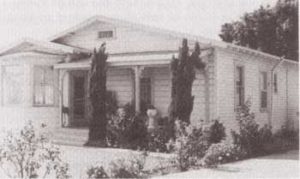
The Colored School, Watsonville, CA
On this date, 1866, The Colored School in Watsonville, CA, was established.
Watsonville is south of the San Francisco area between Santa Cruz and Salinas. The Colored School was in a small, modest cottage set back from the street on a deep lot. Although the exterior had been altered, it had the original clapboard siding. This small building was the Pajaro Valley School District's response to Robert Johnson, a Black farmer from Tennessee who asked to have his children admitted to the public school.
Rather than permit Black children to attend the same school as whites, the district hired a woman to teach blacks in her home in 1864. On October 29, 1866, Johnson again requested that his children be admitted to the public school on the "grounds he was taxed for the support of the school and, under the provision of the state (then new) Civil Rights Bill, his children were entitled to the benefits of the School."
In response, the school trustees raised money to build A Colored School. Johnson contributed to the site for the school and set the conditions to guarantee continued land use for non-segregated educational purposes. Johnson passed the title to the property on East Lake Street to the Pajaro Valley School District. He made the following stipulations: The land was "to be used for a schoolhouse to which children shall be admitted irrespective of color for education, who shall have arrived at legal school age, and demean themselves accordingly to the rules and customs of common school, and should this school not be maintained for any year in a time of peace, then this instrument shall be void, and the land and promises herein described shall revert to said party of the first part, his heirs, executor, administrator and assigns." (Recorded November 5, 1866, Deed Book 8)
By 1878, the Black community had moved to end the separate but equal education policy, but the trustees denied their petition. This was even with the passing of a national Civil Rights Act. Blacks then boycotted the 'Colored School.' In retaliation, the trustees closed the school, and Johnson filed suit to bring a test case to court.
In July 1879, the trustees agreed to abolish the traditional policy of separate but equal education, a decision possibly encouraged by the fact that the closed school site would revert to Johnson as stipulated by the deed. The small 1866 Colored School still stands on the Johnson lot, but the property is now a private home and no longer serves educational purposes.